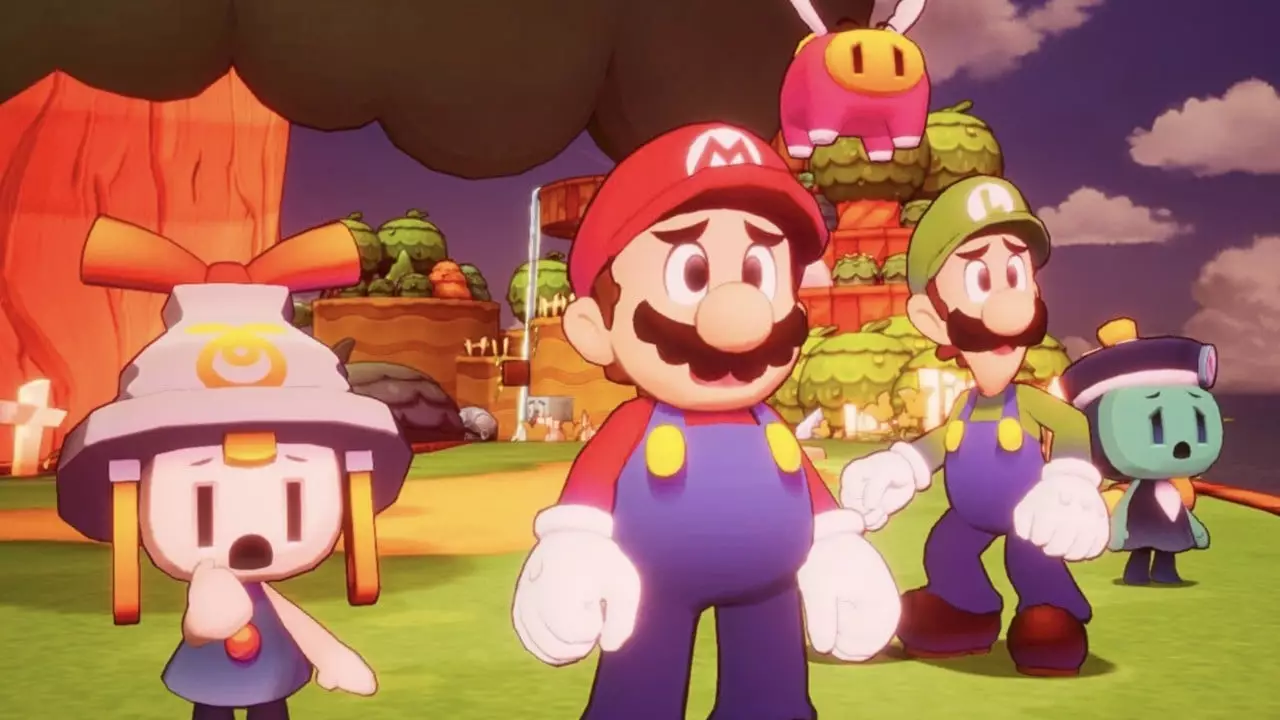The creative journey of video game development often includes brainstorming sessions that yield a plethora of ideas, some of which are inevitably discarded along the way. In a recent revelation, developers Acquire and Nintendo went through an extensive title selection process for their latest RPG, resulting in over 100 potential names. This aspect of game development is frequently overlooked by players who see only the polished final product. The glimpse into the process emphasizes the effort and teamwork involved in arriving at a title that resonates with both developers and fans alike.
In an interview with Nintendo Dream, producer Akira Otani shed light on one of the significant considerations during this brainstorming phase: the potential title “Mario & Luigi Wonder”. The initial enthusiasm for this title was met with an unexpected hurdle—the unfortunate timing of the release of “Super Mario Bros. Wonder,” which forced the development team to pivot away from their favored choice.
Coexisting Titles: A Coincidental Conflict
This title controversy raises interesting questions regarding communication and awareness among development teams within Nintendo. Given that Takashi Tezuka, a veteran figure in the Mario franchise, played dual roles in both “Super Mario Bros. Wonder” and “Mario & Luigi: Brothership,” one might expect a level of coordination that would prevent such an overlap. It’s hard to believe that the teams were entirely unaware of each other’s projects, especially since game development cycles can span many months or even years.
Despite this oddity, the anecdote is amusing and serves to show that sometimes, title selection amidst multiple projects can lead to creative conflicts. This chaotic scenario could serve as a cautionary tale about the importance of effective communication in collaborative environments, particularly in large organizations like Nintendo that contain a variety of internal teams working on triumphant franchises.
The Significance of “Brothership”
The final title, “Mario & Luigi: Brothership,” emerged from this chaotic naming pilgrimage as both fitting and meaningful. Otani described how the term “Brothership” not only symbolizes the relationship bond between Mario and Luigi but also offers a double meaning—embodying camaraderie and teamwork, which are pivotal themes in the franchise. At a time when narratives involving strong interpersonal connections are essential in gaming, this title effectively encapsulates the essence of brotherhood as well as adventure.
Interestingly, despite common trends in the gaming industry to rebrand titles for regional audiences, “Brothership” remains consistent across different markets. This suggests a conscious desire by Nintendo to maintain the integrity of the title and its messaging, emphasizing the universal nature of the themes within the game.
Ultimately, the unique journey that led to the title “Mario & Luigi: Brothership” reflects not just the playfulness inherent in the Mario franchise but also the complexities involved in game development. With “Brothership” standing as a thoughtful reflection of the bonds that the series has long celebrated, fans are left to appreciate the deliberation that goes into every detail. It’s heartening to consider how a title can encapsulate both gameplay and thematic depth, making it a cherished component of gaming culture. What do players think? Would “Mario & Luigi Wonder” have stood the test of time, or does “Brothership” encapsulate the adventure the way it should?


Leave a Reply